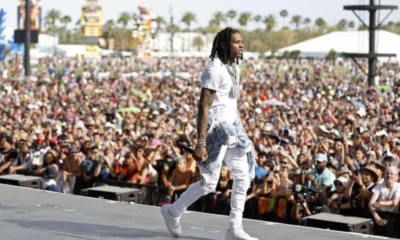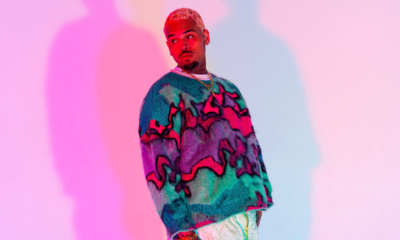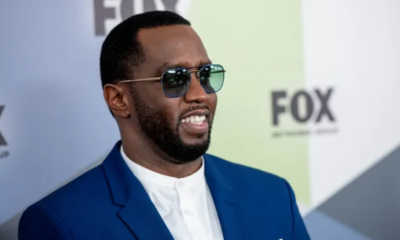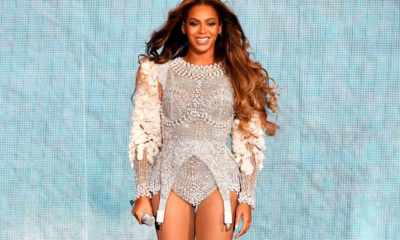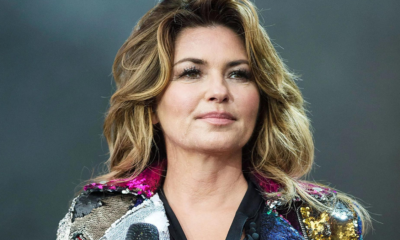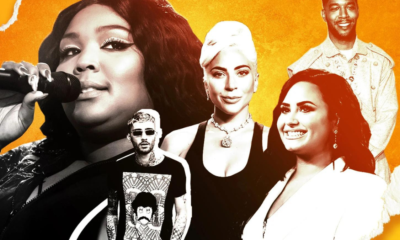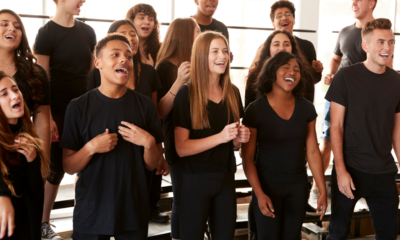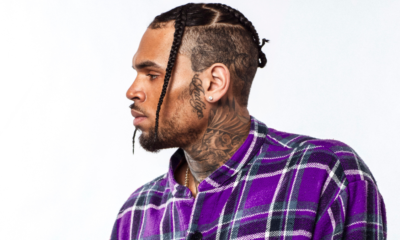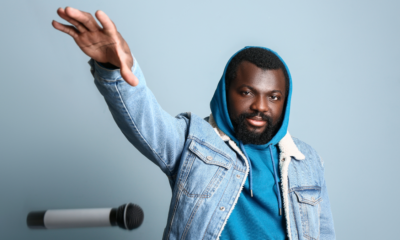Fashion
Style File: Erica Wark
Ottawa based sought after stylist expert, Erica Wark, went from walking the runway to styling the models on it. She has worked with various journalists, to politicians, to a pop star and this is just the beginning.
Published
8 years agoon
By
Contributor
TVM: Today I am speaking with stylist expert, Erica Wark. Erica, how are you doing today?
Erica: I’m great. How are you?
TVM: I’m fine thank-you. I’m just wondering if you could tell our audience a little bit about yourself.
Erica: Sure! Well, I wear many hats (laughs). I am fully self-employed in the fashion industry and I do anything from writing articles, to styling photo shoots, to doing on air segments for different television shows including CBC’s Steven & Chris, Entertainment Tonight Canada, Breakfast Television Toronto, etc. I also work with private clients, help them shop and put pieces together.
TVM: Very interesting. How exactly did you become a stylist and why?
Erica: That is a great question. It all happened very organically, I didn’t intend to have the job that I have now. Since I started modelling at 13, I knew I wanted to work in fashion because I loved working with clothes. I decided after high school to study journalism and after obtaining my degree, I always knew that I wanted to marry the two together but I had no idea how I was going to do that (laughs). My modelling agency at the time actually hired me to do various styling jobs and I realized how much I liked and was good at it. It all started to blossom from there.
TVM: Where do you get your inspiration?
Erica: From everywhere. And simply because I’m never styling the same thing, every segment, magazine, and client is completely different. This gives me more variety and makes me better at my job. Anything from movies, celebrities, trends, magazines, online, or even architecture; you really get inspired from where you’re looking. I think the beauty of fashion is that it’s so versatile and constantly evolving so you never get sick of it.
TVM: Um hm. When did you realize that you were good at your job?
Erica: (laughs). Well, I don’t feel like I’m really good at it, I feel I’m always striving to be better. I realized that I could potentially do this as a living, probably two years ago when I had the opportunity to work with Hollywood Era that was for Walmart Canada and I styled Ashley Tisdale in LA for the photo shoot.
TVM: Other than Ashley Tisdale and you’re work with various television shows, which other artists or personalities have you worked with?
Erica: I’ve done a lot of local artists from Ottawa, a lot of the morning hosts from the television networks here, people in politics…
TVM: Really, like who?
Erica: Unfortunately (laughs) I am unable to divulge that information. Clients are kind of particular about keeping their stuff low key.
TVM: Right.
Erica: I really feel as much as it’s great to have celebrities, and that’s cool, I feel like my mission in fashion is to reach the everyday individual. That’s sort of where my career has been focused towards.
TVM: Do you follow certain trends when styling an artist or personality?
Erica: It’s really based on their personality. I first consult with my clients and ask them what they are looking for because generally speaking when they call me they are looking for a change but they still want to feel like themselves. The worst thing about makeover shows is that they veer so far away from the participant’s comfort that they go back to their old ways. I want to know that those I work with can manage those looks once I’m gone. I feel like “trend” is sort of a loose term now and that it’s no longer about trends season by season because there’s so many, it’s more about the individual.
TVM: Do you have any advice for any budding stylists?
Erica: My advice is to definitely intern with other companies, stylists, or magazines. That is the key to success because not only do you learn the ropes, but you also meet fantastic contacts for networking. I did two unpaid internships in New York, I also did work with freelancers and I just learned from other people in the industry. I feel that internships are crucial in any kind of industry.
TVM: Well alright then. What does fashion mean to you?
Erica: Omigosh, that’s a good question. Fashion means everything to me. When you’re self-employed building a brand for yourself, it really becomes your lifestyle as opposed to a job. I genuinely love going to work every day, it feels like such a blessing and it’s become a part of who I am. Fashion and I are like one being; I owe everything to fashion and I am fortunate that I am one of the few who get to do this every day.
TVM: So, lucky Erica, how would you define great style?
Erica: Confidence. Confidence is everything, you have to feel good in what you’re wearing because it could make or break an outfit even on celebrities. I think JLo is such a good example, she may not be the best dressed out there but she owns everything she wears and it makes you love it.
“I don’t think looks matter per se, I think it’s about the talent and the musician.”
TVM: Nice example. What does the job of a stylist typically consist of?
Erica: A lot of schlepping (laughs). I call myself the personal schlepper because it is a lot of hard work; it’s not glamorous at all. I’m often in stores pulling clothes, carrying clothes to locations, steaming clothes, pinning clothes, dressing and undressing models, and it’s a lot of email work. For one photo shoot, you can easily spend over 30 hours just emailing people. There’s a lot of background work that leads up to the big moment of a spread in a magazine or a 5 minute television segment. It’s a lot, but it really pays off when you see the finished product of what you’ve created.
TVM: Well said. How would you describe your style?
Erica: I would describe my style as very chaotic in the sense that it’s always changing. I mean, I really don’t have a sense of personal style because I am so focused on trying new things and stepping out of my own comfort zone to, basically, practice what I preach. I can’t be telling clients to push boundaries if I’m not. Ultimately, I like to be comfortable in what I’m wearing but I also like to be chic, so I think my style is a combination of the two.
TVM: Okay. What do you love about being a stylist?
Erica: I love watching fashion shows and seeing the clothing for the first time. It’s like watching live art go down the runway. I get to curate that and work with it in my job, I mean, how lucky am I? It’s like playing dress up with Barbies, I mean we used to love doing that when we were young. And at 27, I’m still able to do that. It’s a complete dream come true.
TVM: That’s amazing. How important do you think a stylist is for an artist?
Erica: That’s a really good question. I think it depends on the circumstance of the artist themselves. But I would recommend at least meeting with a stylist and having them go through what you currently work with, discuss where you would want to be eventually, finding a style that works within budgetary constraints, and finding your own style that reflects who you are as an artist.
TVM: How soon should an artist seek a stylist?
Erica: I think finding their own path first is most important. They have to perfect and understand what they want as an artist first. Once they have developed that and are confident with those choices is when they should find a stylist.
TVM: Once they have all of that, how do you determine the best style for your clients?
Erica: Again, it’s really about sitting down and having that conversation about what they are currently doing, where they want to go and finding that balance. Research is key with styling as it probably is with most jobs for finding out what brands and designers work specifically with that artist.
TVM: What are your top 5 styling tips for any aspiring artist?
Erica: Be consistent, if you decide to go one way or the other, stick to it because you don’t want to confuse your audience. Wear it with confidence, as I was saying, confidence is king especially when you’re a performing artist. Be true to yourself. Dress comfortably, because sometimes you can be up on stage for 3 hours and you wanna make sure the fabrics are comfortable and you’re not sweating through them in the first hour. And probably the most important and often forgotten is making sure that you can actually walk in the shoes you’re wearing (laughs).
TVM: (laughs) Right!
Erica: So many times you see celebrities wearing these sky high shoes that they literally cannot walk in and that is completely unrealistic. We’re not all Beyoncé in 4 inch heels and if you’re not comfortable, you have to find something that works for you.
TVM: Do you think that looks matter for an artist?
Erica: I don’t think looks matter per se, I think it’s about the talent and the musician. I certainly think image is important though. What I mean by image is the overall perception of your brand. So that’s why it’s crucial for stylists, hairstylists, and makeup artists to sit down with an artist and have that conversation in order to make sure that everyone is on the same page.
TVM: Would you say that style could make or break an artist?
Erica: Um, hmm…that’s a good question. I think it depends on the type of artist, for example, Mumford & Sons are super casual, and they wear jeans and t-shirts, relaxed and easy breezy. Then you have someone like Lady GaGa, who wears meat on her body and I think her image is really important because she is becoming this icon for fashion but I don’t think if Mumford & Sons changed their style it would really matter.
TVM: Well alright then. So what great things can we expect from Erica Wark, stylist expert, in the future?
Erica: Wow that is a good question. I have no idea! I feel like at this point in my life, the sky is the limit. I’m gonna keep pushing the boundaries of fashion, doing my best to help build a fashion community here in Ottawa and Canada as a whole, and I wanna just keep doing what I do every day and hopefully I can continue doing it for many years to come.
TVM: That sounds great. Thank-you so much for speaking with The Vocalist today and I wish you nothing but success in the future.
Erica: Aw, you’re so sweet. Thank-you.
You may like
-


Why Are So Many Rap Concerts Getting Canceled?
-


CHRIS BROWN: The Top Recording Artist ALIVE [Vocal Range]
-


3 KEY ENTREPRENEURIAL LESSONS I LEARNED WHILE WORKING FOR P. DIDDY AND BAD BOY ENTERTAINMENT
-


Céline Dion was diagnosed with a “very rare neurological disorder” that prevents her from singing normally
-


Beyoncé’s New Album, RENAISSANCE
-


Shania Twain Opens Up About ‘Scary’ Lyme Disease Symptoms: ‘I Thought I‘d Lose My Voice Forever’
Business
“Jephte Bastien: Crafting Cinema, Challenging Norms, and Championing Authentic Stories”
Jephte Bastien, a multifaceted director, producer, creator, and editor, has carved a unique path in the film industry. From his humble beginnings in Haiti to his groundbreaking work in cinema, Jephte’s journey is a testament to resilience, creativity, and an unyielding passion for storytelling. In a recent interview, Jephte shared insights into his life, inspirations, and the challenges he has faced as a filmmaker.
Published
2 weeks agoon
March 20, 2025By
Contributor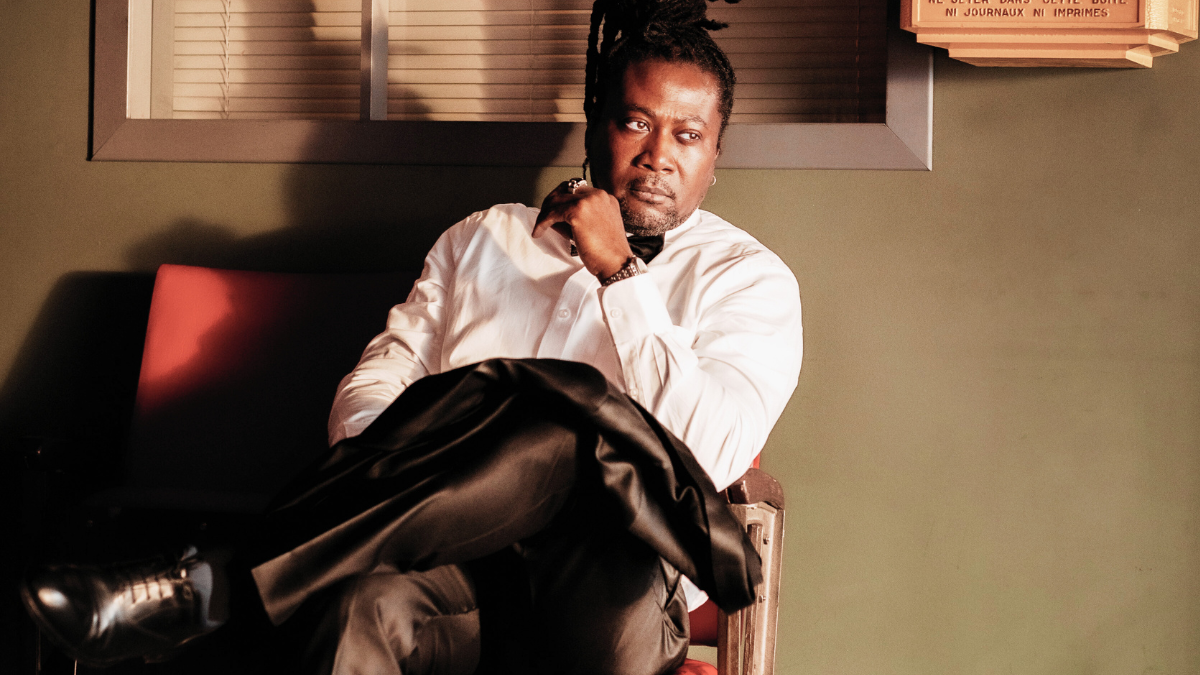
Early Beginnings: A Childhood of Creativity
Jephte’s love for storytelling began in his childhood. Growing up in Haiti, he would cut out paper silhouettes, align them with thread, and use a flashlight to project characters onto a makeshift screen. This early form of shadow puppetry allowed him to mimic voices and create stories, laying the foundation for his future in filmmaking. Music also played a significant role in his upbringing. As the seventh of nine boys in a large Christian family, Jephte started singing in church at the age of five. His family’s tradition of entertaining one another—through poetry, singing, and dancing—fostered his creative spirit.
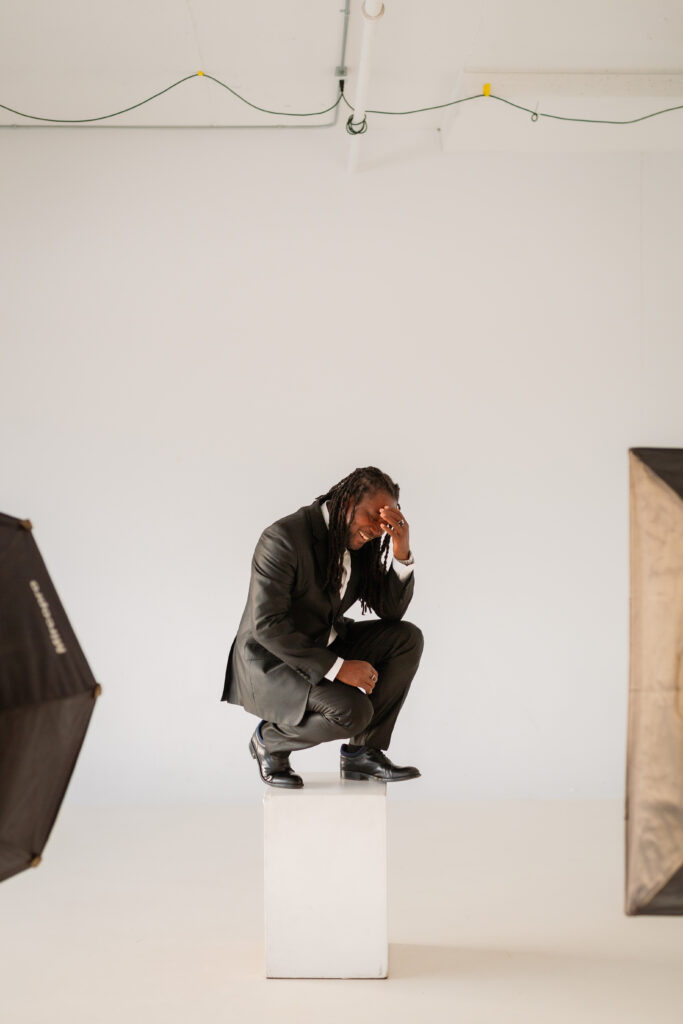
Haiti: A Source of Inspiration
Haiti holds a special place in Jephte’s heart. Despite the media’s often negative portrayal of the country, Jephte describes it as a paradise filled with vibrant culture, music, and natural beauty. His early memories of Haiti are filled with joy—playing games, eating mangoes straight from the trees, and forming lifelong friendships. When his family moved to Canada, Jephte struggled with homesickness and depression. Haiti became a recurring theme in his dreams, a place he would revisit mentally to find solace and inspiration. Even as an adult, he traveled back to Haiti frequently, using the trips to rejuvenate his creative energy.
The Church and Early Questions
Growing up in a religious household, Jephte was deeply involved in the church. However, he began to question the narratives he was taught, particularly the lack of representation of Black people in religious imagery. These early questions about identity and representation would later influence his work as a filmmaker. Jephte’s departure from the church was not a rejection of faith but a search for truth and authenticity in storytelling.
A Journey to New York and Beyond
Jephte’s pursuit of his passion led him to New York in the 1990s, where he studied theater despite his parents’ wishes for him to become a lawyer. This decision marked the beginning of his independent journey. He worked tirelessly to pay for his education, immersing himself in the arts and honing his craft. After returning to Montreal, Jephte faced the harsh realities of the film industry. Despite his talent, opportunities were scarce, especially for a Black filmmaker in the 90s. Determined to tell his own stories, Jephte enrolled in film school, where he began to develop his unique voice.
Breaking Barriers in Filmmaking
Jephte’s career is marked by a series of groundbreaking projects. One of his early successes was editing a music video for the song “Due to the Interest” by Garou. Despite the director’s inexperience, Jephte stepped in to manage the set, ensuring the project’s success. The video became a buzz clip, earning praise from industry heavyweights like Luc Plamondon. However, Jephte’s refusal to accept a $2,000 bonus from the director highlighted his commitment to integrity over financial gain.
In 2003, Jephte produced “Haiti Through My Eye,” a docu-series that showcased Haiti’s rich culture and history. The project was a critical success and opened doors for future opportunities, including funding for his feature film “Exit 67.” Despite the challenges of securing funding and navigating the industry’s systemic barriers, Jephte remained steadfast in his mission to tell authentic stories.
The Draft: A Powerful Vision
One of Jephte’s most ambitious projects is “The Draft,” a film about a young Black hockey player whose dreams are shattered by a brutal act of racism. The story follows his journey as he mentors his younger brother, offering a new paradigm for success. Jephte describes “The Draft” as the most powerful film he has ever written, a project that challenges the status quo and highlights the resilience of marginalized communities.
However, the production of “The Draft” was not without its challenges. Jephte faced significant obstacles, including interference from unions and a lack of support from industry institutions, except Telefilm and Harold Greenberg Fund, who supported the project from the beginning. Despite these hurdles, he remained committed to the project, pouring his own resources and energy into bringing his vision to life.
The Struggles of an Independent Filmmaker
Jephte’s experiences shed light on the difficulties faced by independent filmmakers, particularly those from underrepresented communities. In Canada, the film industry is heavily reliant on government funding, which often comes with strict quotas and limitations. Jephte has faced numerous rejections and setbacks, including being blacklisted by medias after an interview. Despite these challenges, he continues to create, driven by his passion for storytelling and his desire to challenge societal norms.
A Legacy of Resilience
Jephte Bastien’s journey is a testament to the power of perseverance and creativity. From his early days in Haiti to his groundbreaking work in film, he has remained true to his vision, using his art to challenge stereotypes and inspire change. As he continues to work on “The Draft” and other projects, Jephte’s legacy serves as a reminder of the importance of representation and the enduring power of storytelling.
Business
The State of the Music Business Today: Navigating a New Era
Today, the music business is more dynamic and complex than ever, offering both challenges and opportunities for artists, labels, and stakeholders.
Published
8 months agoon
August 7, 2024By
Contributor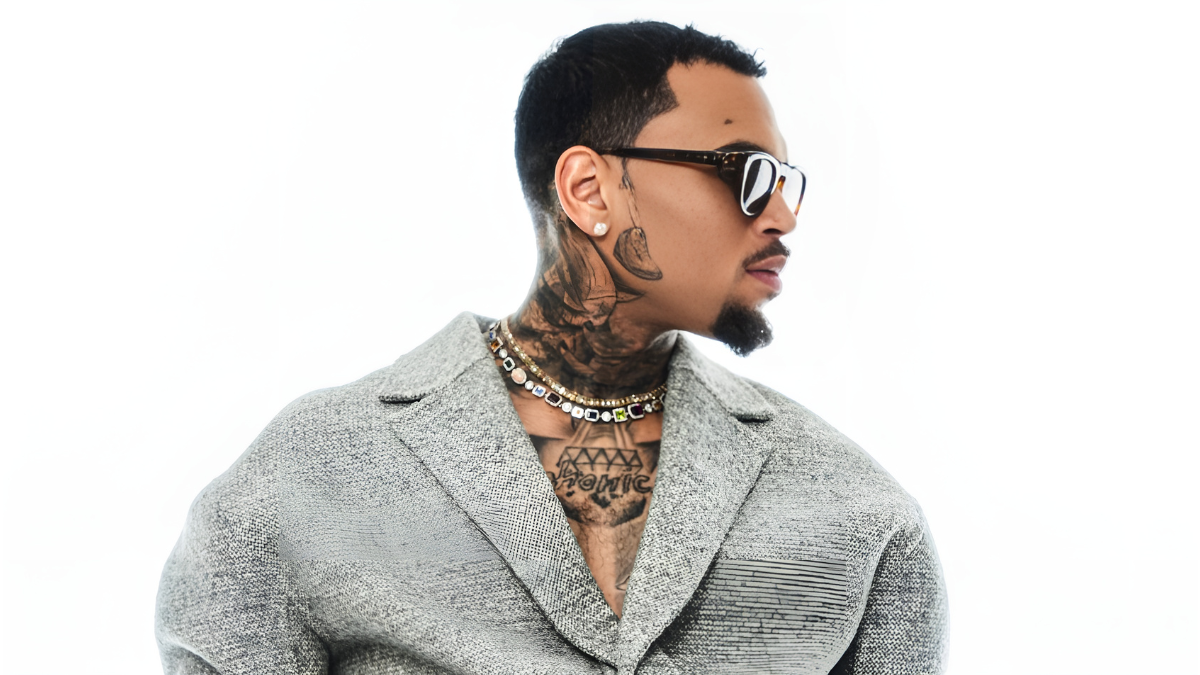
The music industry has undergone significant transformations over the past few decades, reshaped by technological advancements, changing consumer behaviors, and evolving revenue models. Today, the music business is more dynamic and complex than ever, offering both challenges and opportunities for artists, labels, and stakeholders.
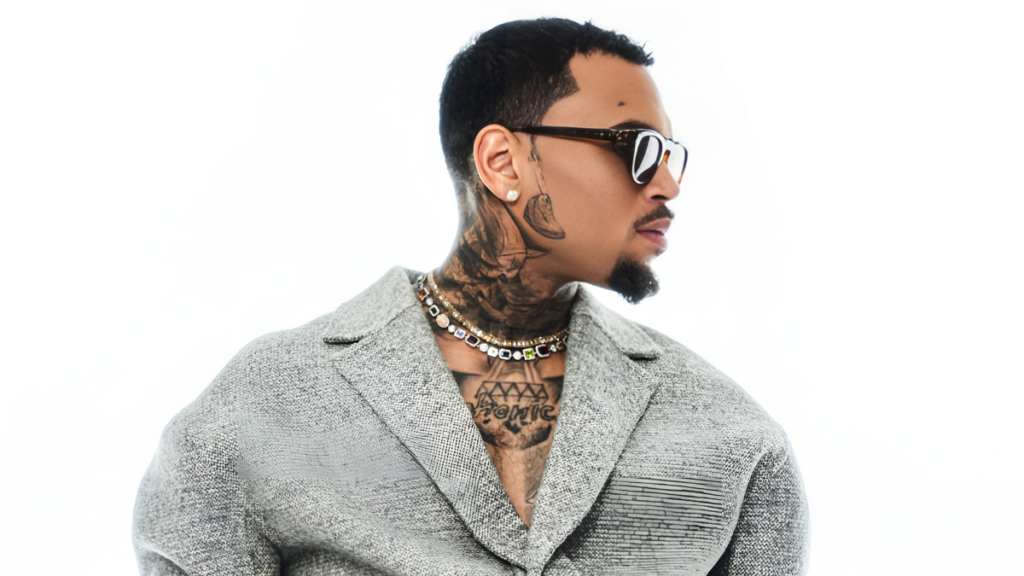
Streaming: The Dominant Force
The rise of streaming services such as Spotify, Apple Music, and Amazon Music has revolutionized how people consume music. Streaming now accounts for the majority of global music revenue, surpassing physical sales and digital downloads. This shift has democratized access to music, allowing fans to discover and enjoy a vast array of genres and artists with ease. Urban artists like Drake and The Weeknd have leveraged streaming platforms to reach global audiences and achieve mainstream success. However, it has also raised questions about fair compensation for artists, as the revenue generated per stream is often minimal compared to traditional sales.
The Role of Social Media and Viral Trends
Social media platforms like TikTok, Instagram, and YouTube have become crucial for music discovery and promotion. Viral challenges and trends can propel songs to global stardom overnight, as seen with Cardi B and Megan Thee Stallion’s “WAP,” which gained immense popularity through social media engagement and challenges. Similarly, artists like SZA have used social media to engage with fans and create viral hits that dominate charts worldwide. This has empowered independent artists, giving them a platform to reach audiences without the backing of major labels. However, the reliance on virality also means that the music landscape can be unpredictable, with trends shifting rapidly.
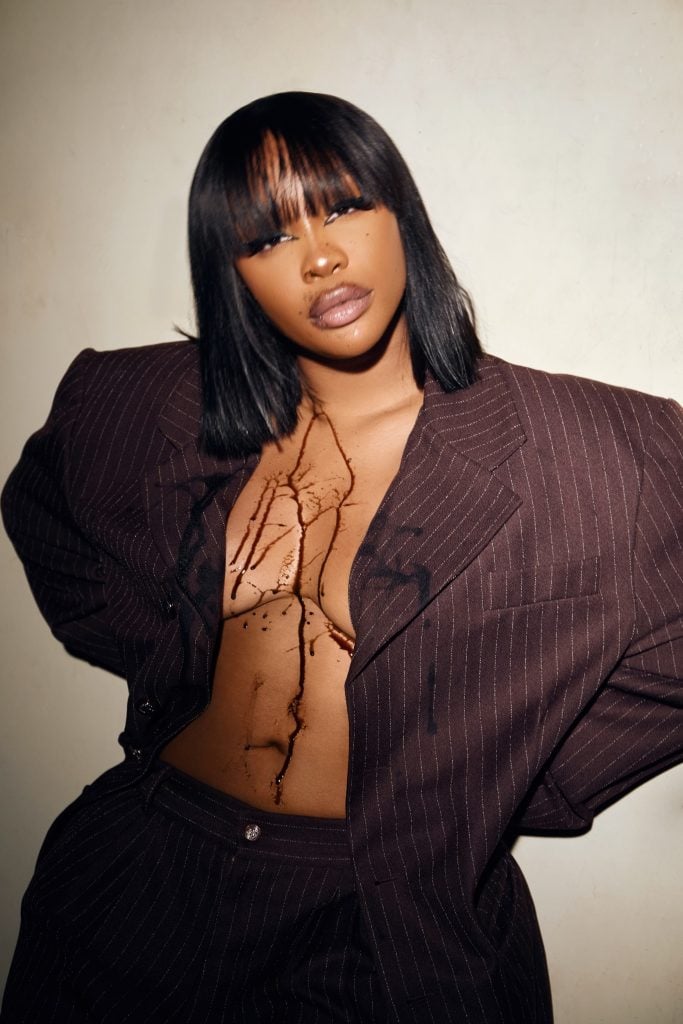
The Resurgence of Vinyl and Physical Formats
Despite the dominance of digital music, vinyl records have experienced a remarkable resurgence. Many music enthusiasts appreciate the tangible, nostalgic experience that vinyl offers, driving its sales to the highest levels in decades. Urban artists such as Kendrick Lamar and Tyler, the Creator have capitalized on this trend by releasing special edition vinyl records, which have become coveted collector’s items. This trend highlights a desire for physical connection in an increasingly digital world and presents a niche market that artists and labels are eager to tap into.
The Evolving Role of Record Labels
Record labels continue to play a vital role in the music ecosystem, but their influence is evolving. While major labels offer resources and connections that can catapult artists to success, more musicians are opting for independent routes or signing with smaller, boutique labels that offer more creative freedom. Chance the Rapper, for example, has achieved significant success as an independent artist, retaining full control over his music and distribution. This shift has led to more diverse and unique music entering the mainstream, enriching the industry as a whole.
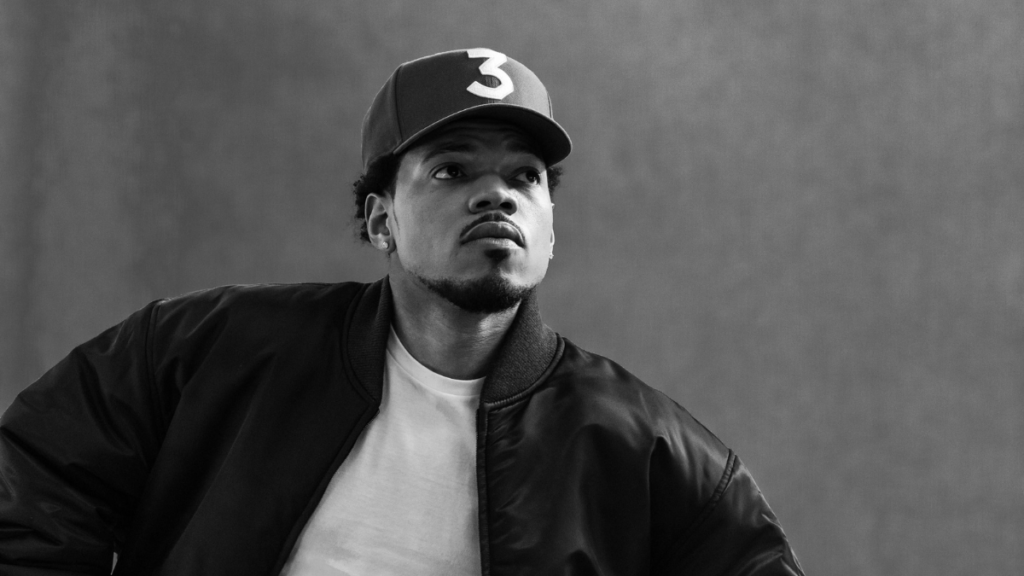
Challenges and Opportunities in Live Music
The COVID-19 pandemic dealt a significant blow to the live music sector, with concerts and festivals worldwide canceled or postponed. However, this period also saw innovation, with artists and promoters exploring virtual concerts and live-streaming events. Travis Scott’s virtual concert within the video game Fortnite attracted millions of viewers, showcasing the potential for digital experiences in the live music space. As live music returns, there is an opportunity to blend in-person experiences with digital enhancements, offering fans new ways to connect with their favorite artists.
Looking Ahead: Technology and Innovation
The future of the music business is likely to be shaped by emerging technologies such as artificial intelligence, blockchain, and virtual reality. AI can assist in music production and personalized recommendations, while blockchain offers potential for transparent and efficient royalty distribution. Virtual reality and augmented reality experiences could redefine live music events, providing immersive and interactive experiences for fans. Urban artists like A$AP Rocky have already experimented with innovative digital experiences, creating unique ways to engage with their audience.
In conclusion, the music business today is a landscape of rapid change and innovation. While challenges such as fair compensation and market saturation remain, the industry is also ripe with opportunities for those willing to adapt and explore new possibilities. As technology continues to evolve, the music industry will undoubtedly continue to transform, creating exciting prospects for artists, fans, and businesses alike.
Business
Why Are So Many Rap Concerts Getting Canceled?
From a handful of Lil Baby concert stops to large events like the Made in America festival, rap concerts have been getting canceled quite frequently in recent years.
Published
2 years agoon
August 17, 2023By
Contributor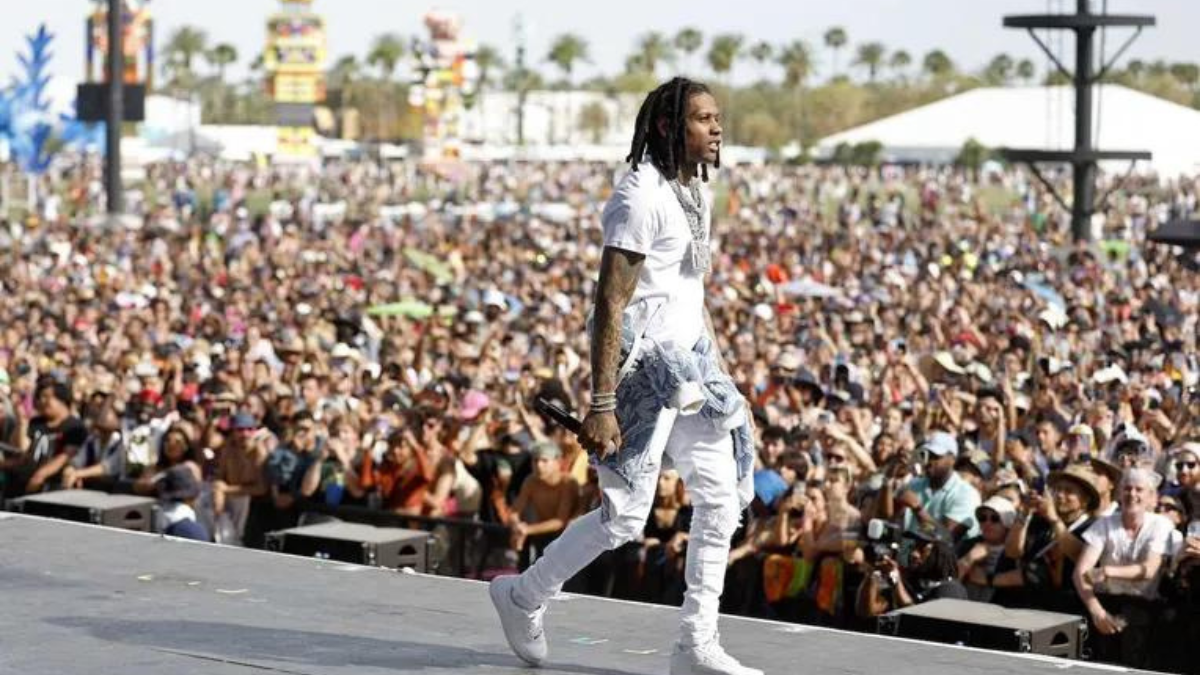

Dan Runcie

Lizzo at a concert in Minnesota (via Manitou Messenger)
Nicki Minaj’s NICKIHNDRXX Tour — canceled in North America. Chance the Rapper’s Big Day Tour — canceled everywhere. T-Pain’s 1UP DLC Tour — canceled. Cardi B’s Invasion of Privacy Tour— chose not to do one.
Touring’s traditional model needs work. Cancellations have happened for years, but this recent wave is different. Many hip-hop artists overestimate demand for ticket sales. We live in an era with endless data, but touring decisions still seem like the industry blindly throws darts. Meanwhile, artists who can sell out those same venues have proudly taken new approaches. These trends are connected.
The popularity of music festivals and concert residencies have added new variables to the live performance mix. Mainstream artists are on a quest to maximize each option. Some are farther along than others. But by the time the majority of rappers find the ideal balance, the touring business might be behind the curve.
Opportunity cost is higher than ever
When artists are on tour, they’re on the road day-in, day-out. It’s traditionally seen as a justifiable tradeoff since many artists earn a majority of their revenue from touring. But it’s still time-intensive, laborious, and costly.
Here’s what I wrote in 2018 in Why Choosing the Right Concert Venue Matters:
A few years ago, Beyoncé, like Drake, once played it safe with concert tours. In 2013 and 2014, The Mrs. Carter World Tour earned an impressive $230 million, but it took Queen Bey 132 shows and twelve months of touring to do so…
Had Beyoncé subjected herself to the same arenas for [On the Run Tour, The Formation World Tour, and On The Run II Tour], she would have needed to perform an additional 207 shows since 2014 to match the $565 million her concerts have grossed in revenue. It would have been impossible to do all those shows while pregnant with the twins, make Lemonade, and do all the other stuff Beyoncé does.
There’s only a handful of artists like Beyonce who can justify the jump to a stadium. For the rest, festivals and short-term Las Vegas residencies are a viable alternative.
But even Taylor Swift has moved on from stadium tours. This summer the 1989 singer will do a European festival run (like Cardi B did last summer), then launch her own festival, Lover Fest, in Boston and Los Angeles. It doesn’t get more 2020 than that.
In an August interview with Ryan Seacrest, she explained why she didn’t do a traditional tour:
“I’m not quite sure what we’re doing with touring. I don’t want to do the same thing every time because I don’t want my life to feel like I’m on a treadmill. There’s a lot that goes into touring that nobody knows about — like you have to reserve stadiums like a year and a half in advance, and that to me is a lot. With ‘Reputation,’ I knew that nobody would really fully understand the album until they saw it live, but this album is different because people are seeming to get it on the first listen.”
All that’s true, but let’s remember two things. First, Taylor is in a select group of artists who can sell out the Rose Bowl, Soldier Field, and MetLife Stadium on back-to-back nights. She wouldn’t forgo that opportunity unless it made financial sense. Second, she’s right about the challenge in reserving venues eighteen months in advance. It’s especially frustrating for those who rise quickly and can’t easily pivot. It’s a good problem to have, sure. But it’s still a problem.
Last year, Lizzo rose to stardom so fast that she outpaced her touring revenue. According to Billboard, last spring’s Cuz I Love You Tour was performed in front of crowds of less than 2,000 people, grossing just over $50,000 per night. To capitalize on her momentum, she came back in the fall with the Cuz I Love You Too Tour at venues that were twice the capacity. But by that point “Truth Hurts” was #1 on the charts and nominated for Grammys. She still couldn’t keep up.
My wife and her friends bought tickets for Lizzo’s October show in San Francisco. They bought tickets at face value back in May for $50. The week before her show they were selling on StubHub for $350! It was a scalper’s dream but an artist’s biggest frustration. All the value was captured by the secondary market. Sure, there’s a chance Lizzo pulled a Metallica-Live Nation and scalped her own tickets. But if that ever happened… whew buddy. The Lizzo hive (and the anti-Lizzo hive) would have burned the internet down by now.
Hip-hop has an uphill battle
The mentality required to succeed in hip-hop and touring is in direct conflict. Most mainstream rappers take pride in beating the odds. They had to bet on themselves to make it this far. Why stop now?
But touring requires far more pragmatism. It’s economics. When supply meets demand, everyone’s happy. Those economics can be especially challenging for hip-hop though, where its streaming popularity outweighs its touring performance.
In a 2018 Wall Street Journal article, Neil Shah broke down how hip-hop may rule the record industry, rock is still king on the road:
There are many reasons that rock remains so powerful on the road, including that, as an older genre, it had a head start on pop and rap. Giant tours by older rap icons like Jay-Z aren’t as common. Fans of newer hip-hop artists skew younger, including teens with less disposable cash, making festival gigs more economical than lengthy, sprawling tours.
“Drake can do four Madison Square Garden shows, but Phish can do 17,” says Peter Shapiro, a New York-based independent concert promoter. Especially in the day-to-day business of clubs and theaters, rock bands, he adds, “still have a huge impact.”
This can make it mistakenly easy for an artist who dominates on RapCaviar or SoundCloud charts to think they are ready for the biggest stages available. Of the top 10 global tours of 2019, none of them were hip-hop. In 2018, just one (Beyonce and Jay Z’s On The Run II). Genre plays a factor.
A good clip from The Joe Budden Podcast where they break down Chance’s canceled tour.
Artists bet on themselves, which is costly
Challenges arise when artists who were once the hot kid start to cool off and need to accept reality. They might not be DONE done, but their prime days are behind them.
That’s where Nicki Minaj and Chance the Rapper are at. Neither admitted that low demand drove their cancellations, but we can follow T-Pain’s humble advice and read between the lines. Several industry insiders believe that both Nicki and Chance couldn’t sell enough tickets to fill 25+ arenas across the US. (I also covered Nicki’s ticketing woes in the Globalization of Hip-Hop, Part I and Chance the Rapper’s in a recent Member Update.)
When both rappers first announced these tours, I thought to myself, “Who the hell gassed them up to think they can still command an arena tour? Who signed this off?” There are plenty of fingers to point, but honestly, neither rapper needed extra convincing.
Keep in mind, Nicki spent the past decade silencing doubters who never thought a female rapper could reach the heights she did. Chance proved the industry wrong as an indie rapper who won Grammys and did arena tours. Their brand is to stay resilient when projections told them otherwise. You wanna go back in time and try to convince them that the lackluster responses to “Chun-Li” and “Groceries” were signs of what’s to come? Yea, good luck with that.
Their mentality is understandable, but it distorts reality. And as more superstars like Taylor and Cardi consider alternatives to touring, promoters may be stretched to fill those same venues with artists who can’t compete in that weight class. It will inevitably lead to more cancellations.
There are levels to this
The traditional touring model is extremely linear. There are tons of venue options for rising rappers who want to perform for a few hundred or a few thousand people. But the leap to arenas (~15,000) is no joke. The jump up to stadiums (~50,000+) is even steeper. The artists at the in-between stages are more likely to leave money on the table or cancel because they couldn’t sell.
The popularity of festivals, residencies, and private events add more options to meet demand:

As AR/VR capabilities develop, more of them will be added to this mix too
I made a similar chart last year on how the traditional albums model has evolved with “mixtapes,” visual albums, podcasts, and more. The trend is similar here. Increased options lead to more experimentation and put artists in control.
Where is this all heading?
This trend should be top of mind for both Live Nation and AEG, which own and operate thousands of venues. It should also concern those who individually manage their venues.
I don’t expect arenas to shorten the timeline for advance booking or cancellation policies. That’s the nature of events in popular venues, whether it’s a wedding or a Migos concert. But they can lean into the trend by pitching themselves as locations for festivals, residencies, private events, or mixed reality experiences. It may be hard to compete against the machine of Coachella, but Rolling Loud and plenty of other festivals are more open to working with what’s available.
By now, every rapper with a big enough following has had at least wondered, “What if I launched my own Astroworld or OVO Fest? Should I do a Vegas residency too?” As I laid out in Why Rappers Started Running Their Own Music Festivals, artists want to leverage their power and run the show. They want the money from the highest profit margin areas of live performance, like sponsorship and concessions. It’s the same model that Floyd Mayweather uses in his boxing matches. He rents out the building and collects the revenue from everything else.
Touring will always be key for the up and comers who want to meet their day-ones. It worked for Meg the Stallion in the rooftop cypher days and Cardi B in the Love & Hip-Hop days. It will always be a core for the legacy artists who can draw crowds wherever—like Rolling Stones, Elton John, or Jay Z. But there’s a whoooole lot of artists between up-and-comers and Hov.
These artist want more options, and the market can offer them. The rest of the industry will be forced to adapt sooner or later.
READ MORE: https://trapital.co/2020/01/09/the-hip-hop-touring-business-is-broken/

Dan Runcie
Founder of Trapital

“Jephte Bastien: Crafting Cinema, Challenging Norms, and Championing Authentic Stories”

Jephte Bastien: The Visionary Filmmaker Behind Exit 67 and The Draft

“Spark Davidson: The Visionary Behind Montreal’s R&B Revolution”
Trending
-

 Business3 years ago
Business3 years agoThe Day Jordin Sparks Stopped Singing
-

 Business2 years ago
Business2 years agoWhat Genre of Music Suits My Voice? How To Find Your Vocal Style
-

 Business2 years ago
Business2 years agoCHRIS BROWN: The Top Recording Artist ALIVE [Vocal Range]
-

 Business3 years ago
Business3 years agoBenefits of Joining a Choir
-

 Business3 years ago
Business3 years agoChris Brown’s 12th Studio Album “Breezy”
-

 Business3 years ago
Business3 years agoFalsetto: The enduring love affair with the soaring male voice.
-

 Business3 years ago
Business3 years agoFood for Singers: The Diva Diet
-

 Business3 years ago
Business3 years agoTVM-TV LIVE


